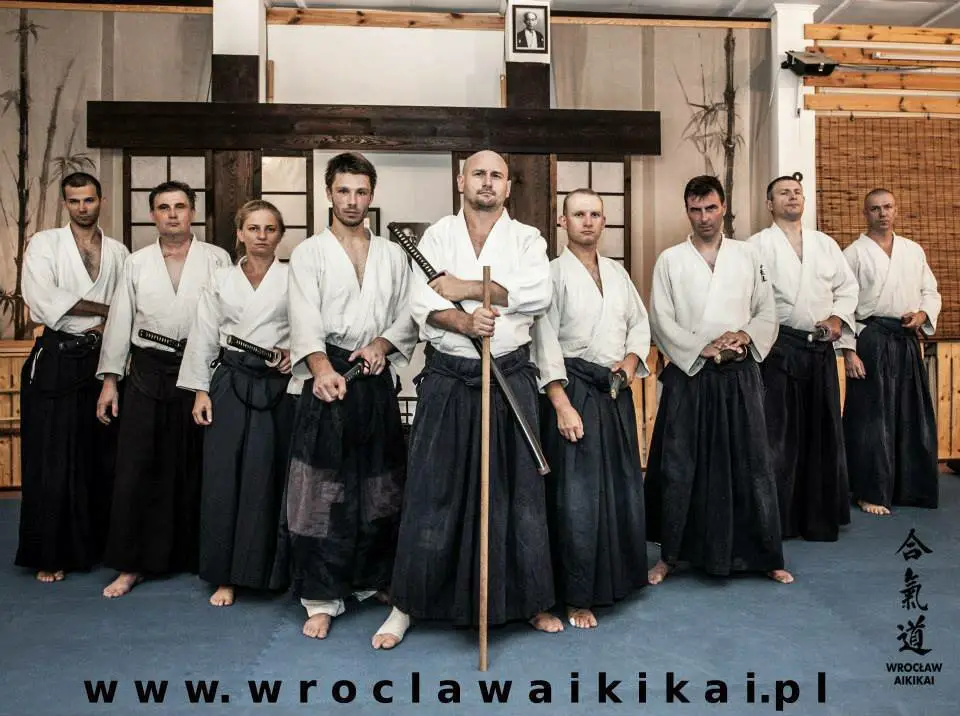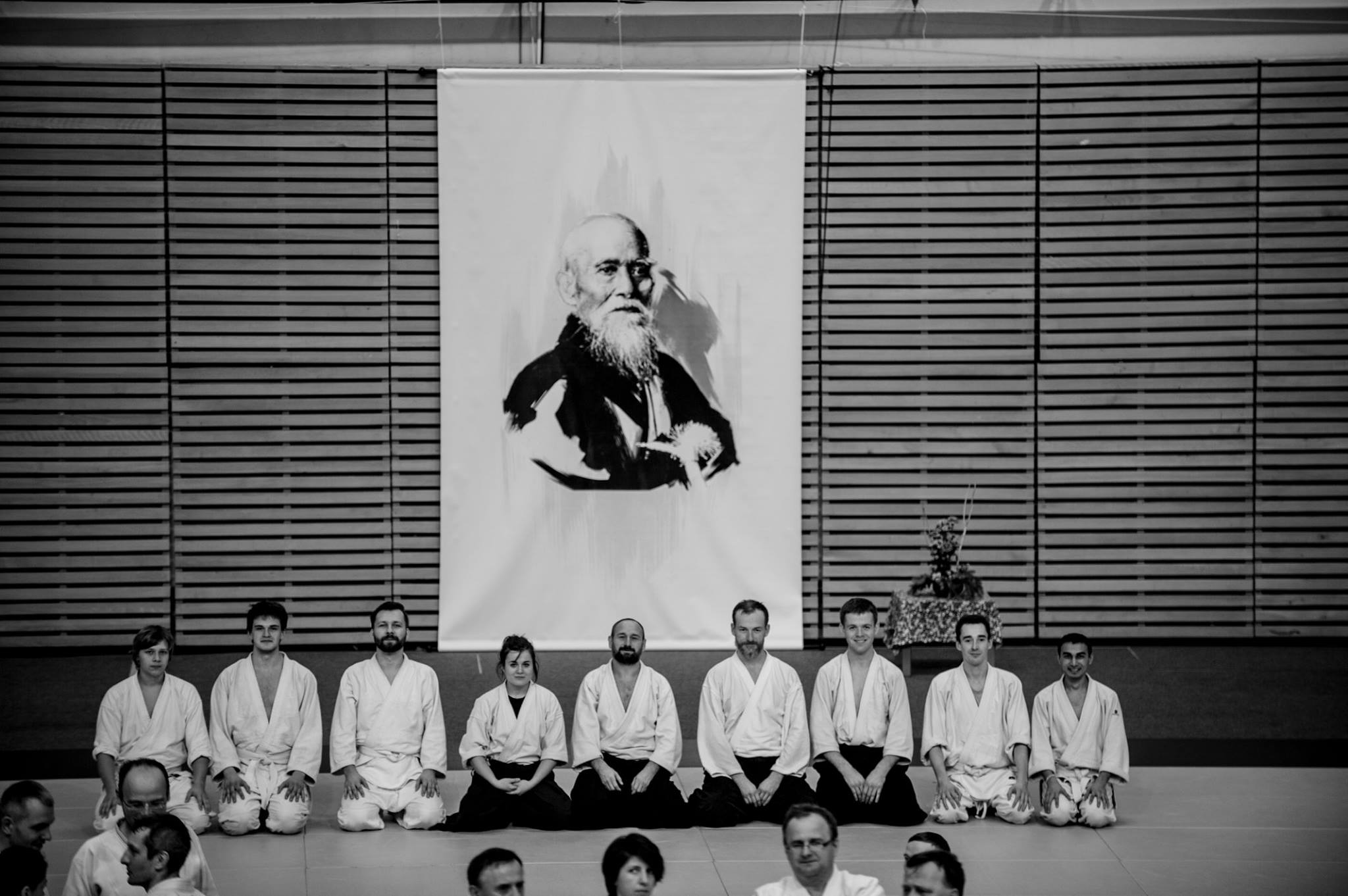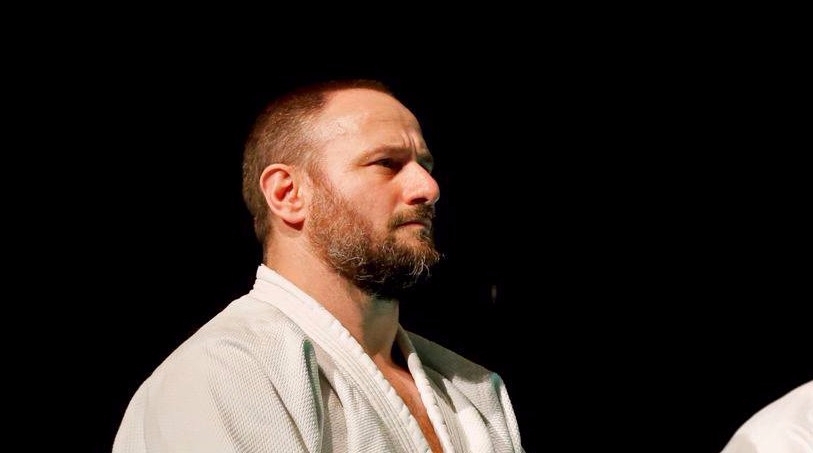Interview with Piotr Masztalerz from the Wroclaw Aikikai
Piotr Masztalerz studies Aikido since 1988. He’s a 6 Dan Aikido Birankai Shidoin based in Poland. For those who don’t know Birankai is an association of Aikido Practitioners and Dojos founded by T. K. Chiba Shihan, forged by rigorous training, tempered by mutual respect, and committed to the relentless pursuit of the art.
First of all when and where you were born?
I was born in 1971 in Wrocław, Poland. I still live and teach here.
How do you hear about the Aikido and how you got to your first class? Anything particular that made your stay?
It was 1988. I saw an article about Aikido in newsletter. At this time I was studying taekwondo and karate for maybe 2,3 years. If I remember well I was attracted by the non-conflict concept of Aikido. I was pretty religious as a teenager and was looking for a martial art that is less violent. Aikido community was great – we were all young, spending great time together.
Through 30 years of practice my motivation changed many times.

What difficulties have you faced during the time of your start?
We were all beginners, even teachers. Poland was poor, not many seminars, we were too poor to travel. At the same time Dojo was huge and I started teaching too early. I was maybe 19 years old and each class was about 60- 80 people. Now it is hard to realize but it was like that. It was difficult to stay humble and get the knowledge at the same time. I wasn’t ready for that.
You have a degree in a history as far as I know. This should have taken a part of your lifetime. Anything else you were doing besides Aikido and education like job or?
It took me long time to be able to be full time teacher. I’m a history teacher but I never did teach history. I was teaching Aikido at 2 universities for 15 years and a teachers degree was required to be able to do this. I’ve been doing many strange things for the years to support training. I was working in bookshop, cooking in London, working on construction in Chicago. Then I started to teach kids with Aikido and finally was able to support Aikido travels and become professional. We were like one eyed leading blind people. We really needed a teacher.
How much time did it take to get a Shodan and what it meant for you?
7 or 8 years. It was in front of a Shoji Seki Shihan during a big seminar in Warsaw. I don’t remember much, I was really nervous and probably pretty bad.
In western culture black belts have almost mystical meaning. In Japan Shodan means just beginning of way. It’s common that many people stop practicing after Shodan test. Almost like it was a goal.
I believe serious student need to be Shodan to be treated seriously by teacher, to be noticed – to be able to steal from teachers. Looking for anything more in being yudansha can be a trap.

Who were your examinators after?
Sugawara Sensei for Nidan. Aikikai Dojos in Poland had no Japanese teacher. We used big seminars to test in front of many teachers. Then we started getting closer to Birankai. My Sandan, if I remember well, was tested in from of a mixed committee of Polish Aikido Federation and Birankai. After that my tests and promotions were received from Birankai Shihans with Chiba Senseis blessing.
How many years did you spent as an uchideshi overall and where?
Uchideshi means living in student. It is like a movie dream for young martial art adept. You travel to another city or country and knock the wooden door of monastery to live in and learn from master. Real, modern uchideshi is much more complex and less mystical. The truth is – looking for teacher takes much more time and energy than learning from one.
When I was 25 years old I spent almost a year studying with Kanetsuka Shihan in London. Sensei had no uchideshi system and I had to work and survive illegaly in UK. It wasn’t exactly what I expected, I wanted to focus on Aikido only.
My first experience with uchideshi program was in France with Gabriel Valibouse Shihan who was preparing me for being uchideshi for T. K. Chiba Shihan in San Diego. I spent 5 weeks in Strasbourg Aikikai, France.
When finally I got american visa in 2001 i started travels to Chiba Sensei’s Dojo. Because of the visa limitation I kept travelling there for a couple of years each time for few months. I had a big, part time Dojo in Poland at this same time and after 5 years of traveling to San Diego for shorter or longer uchideshi periods Chiba Sensei told me not to come anymore and focus on teaching. He knew that some people became addicted to this experience and that being uchideshi could become more than a tool to be a future teacher.
I understood that uchideshi experience has nothing to do with regular students. Uchideshis learning process is pure and extremely intensive. It changes people physically and forces them to accept their limitations.
After this I spend some time with Juba Sensei who was in NYC at this time. Now I run permanent, big Dojo but still try to follow Chiba Sensei’s former student like Juba Sensei or Ismail Hassan Sensei or others as much as I can. For us, former uchideshis, these people are legends.

Let’s talk about your teachers. They must have had different roles in your life. Is that so?
My first teachers were polish instructors. They were not professionals and Aikido at this time was not considered as a real work. Daniel Brunner Shihan – teacher from Switzerland was coming to us since 1985. And he still is, we learn from him through last 30 years. I was maybe 26 and wanted to be professional and it was Daniel Sensei who told me to be Chiba Sensei’s uchideshi and this changed my life.

Chiba Sensei made me believe that I can be full time teacher. That it is important and serious work. He was the most important person I’ve learn from. My Dojo, my relation to daily practice and students.. He is a reason behind.
I had a chance to follow his former, close students. Juba Sensei, Gabriel Sensei, Ismail Sensei while Chiba Sensei was working with other japanese teachers like Miyamoto Sensei and Horii Sensei . They are also very important for us, we try to invite then and support their seminars.
As you see there are many people I call teachers. They are really important and create me as a teacher.
Chiba Sensei used to say that teacher is a medicine and poison at the same time. As a teacher you fix and break student. You open his mind and limits him at the same time. It takes years and decades for a student to copy and then he breaks from the cage to be free. It’s natural, necessary and beautiful process.
I’m very grateful to all teachers I followed – it’s a great gift to see people that are walking in front of you. To be able to observe their choices, doubts, mistakes and great moments. I hope my students also watch me this way.
What were your biggest steps on becoming a confident teacher?
I’m still doing those steps. Skill and experience comes with age but being martial art teacher is so responsible and complex job that you are never confident. Everyday there are new choices, new problems.
When you are martial art teacher people see in you what they want to see. They idealize you. After many years you may start believe they are right … but they are not.
For me Chiba Sensei was the most serious teacher I ever met. I saw many people taking advantage of being teacher but Chiba Sensei felt a heavy responsibility, not fun at all if you know what I mean.
Nobody is perfect but he is still my main inspiration source.
Speaking about Chiba.. He went really hard on his ukes from time to time. How does this feels from the inside?
I can only say about my experience. Biran means cosmic storm and this was what you felt as his uke. I knew that and made my choice. It was honest, real, alive and there is no other way for Chiba to explain himself.
There are still people teaching this way. Much more experienced than me. Their training with Chiba Sensei was more intense and personal. People like Juba Nour Sensei, Ismail Hassan Sensei, Yahe Solomon Sensei and many others.
Teachers-student relationship is like an invisible leash. Student follow teacher like a moth flies to light. You pay for that with injuries, time, money. But if you felt it once – you never want something else. Student always choose teacher. Sensei can only wait in Dojo and teach people who comes. It is all students choice. Do you know what’s the only thing worst than lack of Sensei’s attention? Senseis attention…
So you’re a boss in Wroclaw Aikikai. Please tell us about the way to Wroclaw Aikikai Dojo.
This year I had a 20 years Dojo anniversary. I started with renting a school gym. Then opened kids group in other place. Kids program became huge. There was a moment I had 250 kids. At this time I became uchideshi and after few years of travel I understood that what I really want is permanent Dojo with a close community.
It took few years to be ready. Now for last 8 years I run permanent Dojo. We have uchideshi rooms, kitchen. This place is supposed to be like second home. Teens are coming after school to do homework in Dojo kitchen. People with some problems can move in. We start classes at 6 am, finish 10 pm. I’m tired but happy.
After 20 years of work there are about 25 black belts in Dojo, big kids program, teens program. To pay rent we run side projects like kids summer camps, weekend workshops, seminars, some ukemi classes for other martial arts, training for actors, companies.
I was teaching at 2 universities, high school and few other places but recently I took a break to be able to travel and teach abroad.
I’ve seen a Kenshusei (a program for the future teachers) & Uchideshi program at Wroclaw Aikido site. Sounds like extra-fun but do the participants really understand what they are going to face?
Uchideshi is the worst and best time of your life. In concept of uchideshi there is no fun at all. You are always hungry, tired and sleepy. There is always something you have to do or something you didn’t do well. But it’s very simple monastery-like life.
You just do Aikido, clean, eat and sleep if you can. If you love Aikido – it is fun.
There is a special, rare type of people who wants to do it. All of them are pretty much crazy. We all are. Those are people who wants break out from normal, respected life with full time job and mortgage. Its great to welcome them and get from them little of this enthusiasm.
For last 8 years I was honoured to host about 15 students staying in Dojo from 1 to 8 months. Polish, Russians, Kenyans, poor, rich, white, black, yellow, catholics, jews, buddhists, atheists, men, woman, older, younger. Sweat and pain here are same for everybody. We work with a human flesh here, the core, not with the labels so there’s no escape.
For few months you do only Aikido. No family, no school, no work, no girlfriend – no excuses. For most of the students Aikido is just hobby and we are really good with excuses while uchideshi is responsible for all and every moment. You see yourself as you are. This is a very simple life but can be most important experience in lifetime.
Anyway, if you really love training you will be happy, if this is just hobby you will never come here…
There are also Misogi & Zazen in your Dojos usual schedule. I’ve seen that before on Baja Aikido. Can you please explain what is in common between Aikido and Misogi / Zazen?
Zazen was and is part of practice in Birankai. It’s very important to understand that before you control your partner you must learn to control yourself. When I was young I didn’t like Zazen probably because the practice was harder for me than the Aikido itself.
I believe for Chiba Sensei Zazen was a tool to make students not only physically strong and skillful but also aware of internal limitations.
Some of us also practice Misogi – purification training in Ichikukai style. Chiba Sensei encouraged some of us to travel to Japan to take part of training called Shogaku Shugyo.
You already traveled much with Aikido while you were learning and you’ve seen a lot as a teacher. What are your travel plans for 2018?
During last years I traveled a lot. I visited my friends and former uchideshis in: Russia, Chile, Kenya and many others. I plan to teach in few new places but it’s not confirmed yet. I love travelling and always ready for new places to see.
To be able to follow Piotr Masztalerz and Wroclaw Aikikai please use Wroclaw Aikikai facebook page, youtube page and a site.







2 thoughts on “Interview with Piotr Masztalerz from the Wroclaw Aikikai”